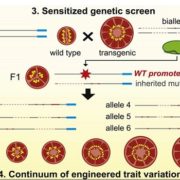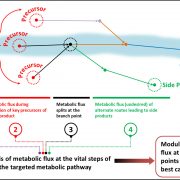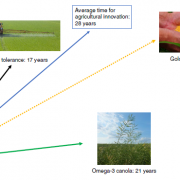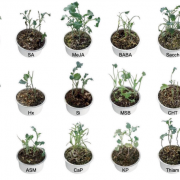Paint the tobacco red: Anthocyanin production in tobacco cells lines
 Anthocyanins are common plant pigments that provide dietary benefits, causing an increase in their use as a food coloring agents. However, purifying anthocyanins from current plant sources (such as waste grape skins, red cabbage and berries) is expensive and creates a variable product. Modifying biosynthetic and regulatory genes of anthocyanins can drastically increase anthocyanin production in plants. Appelhagen and colleagues use tobacco (Nicotiana tabacum) cell lines to produce high levels of different anthocyanins. These tobacco cell lines stably produce anthocyanins and the production can be scaled up in fermenters. They also show how this system can be moved into other plant species, such as Arabidopsis. (Summary by Julia Miller) Metabol. Eng. 10.1016/j.ymben.2018.06.004
Anthocyanins are common plant pigments that provide dietary benefits, causing an increase in their use as a food coloring agents. However, purifying anthocyanins from current plant sources (such as waste grape skins, red cabbage and berries) is expensive and creates a variable product. Modifying biosynthetic and regulatory genes of anthocyanins can drastically increase anthocyanin production in plants. Appelhagen and colleagues use tobacco (Nicotiana tabacum) cell lines to produce high levels of different anthocyanins. These tobacco cell lines stably produce anthocyanins and the production can be scaled up in fermenters. They also show how this system can be moved into other plant species, such as Arabidopsis. (Summary by Julia Miller) Metabol. Eng. 10.1016/j.ymben.2018.06.004









